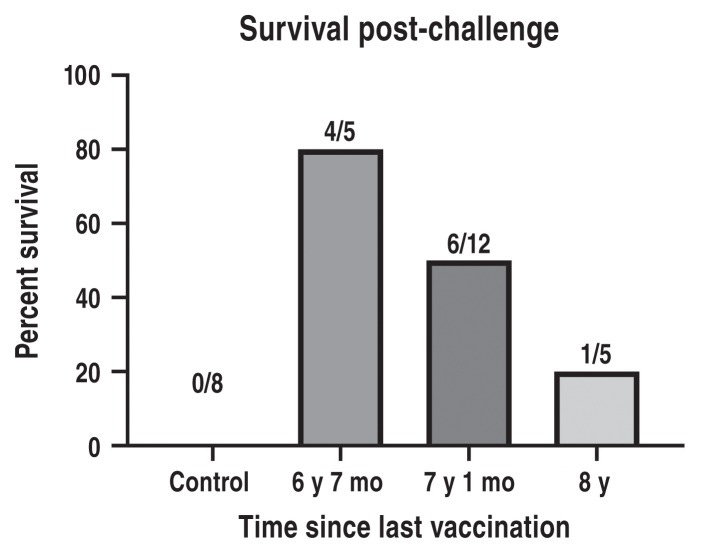What's the evidence for revaccinating dogs against rabies every 1-3 years? What is the difference between the one and three year vaccines?
The answers will shock even the most cynical and jaded.
Did you know the Rabies vaccine is the only immunization required by law for pets in the United States?
Here is the canine vaccination schedule according to the American kennel club:
As you can see, dogs typically receive their first rabies vaccination between 14 and 16 weeks of age, followed by a booster shot one year later, and then boosters every 1-3 years, depending on the vaccine type and state regulations.
However, even if he got a three-year vaccination, your dog’s rabies shot schedule is still dictated by state laws. Both the one- and three-year versions are approved by the U.S. Department of Agriculture.
Here is a map of rabies vaccination laws by state. You can click on the image to be redirected to the interactive map on Michigan State University’s animal center website.
Certain states allow owners to seek an exemption from rabies vaccination mandates while others make no exceptions.
As in humans, animal vaccines carry a slew of potential side effects. These range from injection site swelling, hives, vomiting, diarrhea and fever to life-threatening anaphylaxis, hypersensitivity reactions and even seizures. Admittedly the more severe reactions are rare, but certainly not zero. Cat parents know about the risk of fibrosarcoma at the injection site but this can occur in dogs as well. In addition, cancers, such as spindle cell cancers, mast cell cancers, hemangiosarcoma, osteosarcoma, lymphoma have been reported.
Animal rabies vaccines in the US are manufactured by Boehringer Ingelheim, Elanco Animal Health, Merck Animal Health, and Zoetis. (Remember these names, because they become very important later on in this article)
According to the CDC’s own website, as of 2007 Canine Rabies no longer exists in the U.S.
How long does canine rabies vaccine immunity really last?
The Rabies Challenge Fund research study set out to answer this very important question and came up with some shocking answers.
Three groups of dogs were vaccinated with either 1 of 2 commercial rabies vaccines or saline at 12 and 15 weeks of age.
Beginning 5 years 5 months later, vaccinated and unvaccinated dogs were given a 0.5 mL of a 1:1000 dilution of rabies virus injected into right and left temporalis muscles and observed for 90 days over a series of 3 trials.
Virulent rabies virus led to a 100% mortality in dogs given saline.
Vaccinated dog survival was 80% (4/5) after 6 years 7 months, 50% (6/12) after 7 years 1 month, and 20% (1/5) after 8years 0 months.
The authors concluded that rabies vaccine induces a duration of immunity well beyond 3 years in dogs; that antibody is the most important protective factor against rabies virus; and that anamnestic responses to virulent challenge can be seen in the absence of protective titers in previously vaccinated dogs. While the circulating rabies serum virus neutralization (SVN) titer does not last the lifetime of the pet, protective immune memory to rabies virus in previously vaccinated dogs may last 6.5 years. A review of rabies challenge-studies indicates that there is a positive correlation between rabies SVN titers and the level of protection after virus challenge. Pre-exposure vaccination coupled with an SVN titer at or above 0.5 IU/mL indicates greater assurance of protection than does the animal’s current vaccination status.
So where are these yearly and triennial revaccination mandates coming from?
I’m going to go ahead and make a huge leap of presumption that most of you reading this have already guessed the answer to this question.
Analogous to the CDC and ACIP in humans, the American Animal Hospital Association (AAHA) promulgates animal vaccination guidelines that are followed by veterinarians. And these guidelines are “generously supported” (read: influenced) by Boehringer Ingelheim, Elanco Animal Health, Merck Animal Health, and Zoetis Petcare, the very same pharmaceutical companies that manufacture animal vaccines. The only interest in animal health these days is a conflict of interest.
But wait, there’s more
You might have noticed that rabies vaccines are labeled for either one year or three years. So, what is the difference between the two vaccines?
The astounding answer is that there is no difference. It is the exact same vaccine.
Veterinary immunologist Dr. Ronald Schultz states: “There is no benefit from annual rabies vaccination and most one year rabies products are similar or identical to the 3-year products with regard to duration of immunity and effectiveness. However, if they are 1 year rabies vaccines, they must be legally given annually.
There is no additional volume or disease agent administered to trigger an immune response; the labeling is simply different for the vaccinations. Although your pet may receive a vaccination labeled for one year and is technically protected for three years, she is not legally protected for three years in the eyes of the state.
Dr. Schultz further explains “I tell practitioners that vaccines are drugs, albeit biological drugs. I remind them that they would not consider it good medicine to give an unnecessary pharmaceutical drug on a recurring basis. I think it is even worse to give a vaccine, or biological drug, that isn’t necessary. The possible adverse consequences of a vaccine generally far outweigh the adverse consequences of a pharmaceutical drug. A pharmaceutical drug is usually much more restricted in its action. However, each time we stimulate an immune response, we have to look at the effect on all body systems—not only on antibody responses or cell-mediated immunity, but also on interactions with the endocrine system and the nervous system.”
To put this another way: The one and three year animal rabies vaccines are essentially the same shot with different labels. Medically, a one-year rabies shot can protect for at least three years (probably more like 6.5 years based on evidence). Legally, a one-year rabies shot must be given annually. This means if you vaccinate your pet annually with a rabies shot, you are essentially giving a three-year shot every year.
Epilogue
The perverse incentives and conflicts of interest that plague public health in humans also operate in the domain of Veterinary medicine and facilitated by the same pharmaceutical companies. Even though canine rabies no longer exists in the US, the guidelines mandating one and three year revaccination are based on little more than profit motive. This becomes especially blatant when you consider that the one and three year vaccines are identical and differ only in the label and the duration it has been licensed for. Based on the evidence, we know that the duration of rabies vaccine immunity lasts longer than three years. Why aren’t protective antibody titers considered acceptable in lieu of periodic mandatory vaccination? Whether you like it or not, the era of animal mRNA vaccines has already begun and it is only a matter of time before mRNA rabies vaccines are extolled as the next safe and effective panacea mandated in your pets vaccination arsenal. The questions and concerns raised in this article can be broadly generalized not only to other pets, but to all farm animals. Indeed, we came very close to mass vaccinating poultry against bird flu and stopped short. But the next time we won’t be as lucky.










No vaccine has ever been necessary, safe or effective. No illness or disease has ever been contagious. No virus has ever been proven to exist. It might be worth looking into…
Vaccines harm, shorten the lives, and kill animals. Unvaccinated animals with decent diets and homes don’t get sick and don’t develop cancer and usually live until their late teens, early 20s.
Thank you, this is very timely for me as we just agreed to adopt a puppy, and will have to go through this process.